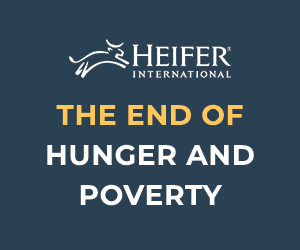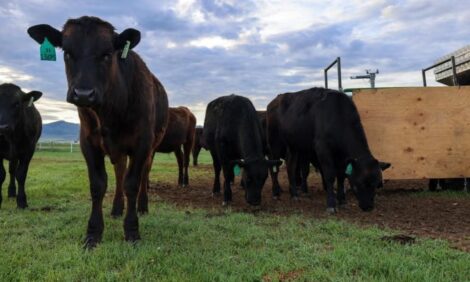



Australia – Livestock and Products Annual 2011
Australia appears to have fully recovered from the severe drought which started in 2002 and began to end with widespread, soaking rains on Christmas day 2009, according to the USDA Foreign Agricultural Service.Summary
In CY 2010, record rainfall was recorded in some areas, with major flooding affecting the worst affected areas during the spring (September 2010 to November 2010) and summer (December 2010 to February 2011) seasons. 2010 has been compared by many with the legendary rains of 1974, which saw devastating cyclones (Cyclone Tracey) in northern Australia and heavy flooding in eastern Australia. Much of Western Australia, however, remained in drought during CY2010.
Herd rebuilding has been encouraged in response to improved pasture conditions and fodder availability stemming from the 2010 rains. Official government statistics reveal that the slaughter of female cattle is falling well below the slaughter of male cattle, indicating that producers are withholding females from slaughter for the purposes of breeding. Consequently, while slaughter, production and exports are all forecast to increase in the coming year, their growth will be limited as producers hold onto females for breeding purposes.
Post has assumed that for the balance of CY 2011, and the forecast period of CY 2012, weather conditions will be more reflective of the long term average. Drier conditions in CY 2012, will likely contribute to modest increases in cattle slaughter, beef and veal production, beef and veal exports and domestic consumption. However, a decline in the average slaughter weight and a record high Australian dollar will likely place some constraints on a more robust expansion.
Despite difficult economic conditions cited by industry sources, exports are forecast to increase. Historically high live cattle prices, near record high local currency prices and the challenging outlook for consumer demand in Australia’s two largest export markets (the US and Japan) are expected to limit an increase in exports to modest levels in CY 2012. The Australian dollar recently reached an historic high against the US dollar (A$1.00=US$1.10) and is expected to remain at historically high levels for the remainder of CY 2011 and into CY 2012. This is expected to lower export returns for the foreseeable future and consequently Post expects domestic consumption to increase.
Following a modest recovery in CY 2011, the Australian pig meat industry is projected to continue to recover in CY 2012. Inventory, production, and consumption are all forecast to increase at modest rates in CY 2012. The historically high value of the Australian dollar is expected to see imports of pig meat increase, while exports are expected to remain flat in CY 2012.
Beef
Inventory
Following a year of torrential rainfall in CY 2010, greatly improved pasture conditions and fodder supplies have supported herd building commencing in CY 2011, and this is likely to continue through CY 2012. This forecast is supported by official government slaughter figures which have female slaughter trending below male slaughter from mid CY 2010 to mid CY 2011. Post expects this to continue through CY 2012, albeit at a slower rate.
Closing cattle numbers are forecast to increase to 28.0 million head in CY 2012, up two per cent on the closing inventory of 27.5 million head for CY 2011. This forecast assumes weather conditions in Australia will remain close to the average (which includes some dry weather) and that the outlook for beef production will remain relatively favorable. A return to drought conditions would likely see the closing inventory for CY 2012 revised downwards and slaughter figures revised upwards.
The all time record for cattle inventory remains at 32.65 million head and was achieved in CY 1975, according to historic ABARES data.
Slaughter
Total slaughter in CY 2012 is forecast at 8.58 million head, up about four per cent compared to the slaughter estimate of 8.25 million head in CY 2011. It should be noted, however, that despite the increase, the 2012 slaughter forecast is slightly below the 10-year average.
Post has assumed a return to more normal weather conditions for the remainder of CY 2011 and into CY 2012. This will see lower rainfall and dryness in some areas as rainfall declines from the record high levels of CY 2010. Post expects that, moving forward, increasing numbers of cattle will become available for slaughter and this will likely see slaughter numbers increase.
Carcass Weight
Total average carcass weight for CY 2012 is expected to fall, from an estimated record annual average high of 259 kg in CY 2011, to around 254 kg in CY 2012. Record high rainfall in CY 2010 saw pasture conditions and fodder availability increase sharply and pushed estimated slaughter weights up sharply in CY 2011. However a return to drier conditions for the remainder of CY 2011 and CY 2012 will likely see average carcass weight decline.
Some Industry sources suggest that in response to lower export returns stemming from the strong Australian dollar, producers could shift production to meet domestic demand for meat to comparatively younger cattle, thereby reducing the average age of slaughter which in turn would reduce average slaughter weights in CY 2012.
Production
Total beef and veal production in CY 2012 is forecast at 2,180 TMT, about two per cent higher than the estimated 2,140 TMT produced in CY 2011, and just under all time record of 2,188 TMT produced in CY 2006. Despite falling somewhat from the estimated record levels in CY 2011, carcass weights in CY 2012 are expected to remain at historically high levels, which should support beef and veal production reaching near record levels in CY 2012.
ABARES has forecast a record beef production level of 2,192 MMT for the 2011/12 marketing year (Jul-Jun), up three per cent from the estimated 2,129 TMT produced in 2010/11.
Exports
Total exports of beef and veal for CY 2012 are forecast at 1,380 TMT (CWE), two per cent higher than the estimated 1,350 TMT exported in 2011 (and just under the record 1,408 TMT exported in 2008). Post uses a conversion factor of 1.4 to convert shipped weight to carcass weight equivalent (CWE).
The projected (albeit modest) increase in beef production is expected to support near record exports in 2012. The two largest constraints to an even greater increase in beef exports are likely to be the strong Australian dollar and falling carcass weights of slaughter cattle.
Historically, the United States was Australia’s largest export market for beef and veal. However, steady appreciation of the Australian dollar against the U.S dollar has significantly diminished the price competitiveness of Australian beef and veal exports in the US market. Additionally, the strong Australian dollar has also rendered Australian beef and veal exports less competitive in other export markets such as Japan which are also supplied by the US. At time of writing this report the value of the Australian dollar had fallen somewhat, however post has assumed that it will remain historically high for the remainder of 2011 and into CY 2012.
Policy
Australia’s Foreign Investment Review Board (FIRB) recently confirmed that it has no objection to the merger between Australia’s largest locally owned processor (Teys Brothers) and Cargill Beef Australia. This follows clearance by the Australian Competition and Consumer Commission (ACCC) for the merger. The two entities remain legally free to merge, reportedly giving them a combined slaughter capacity of around 1.5 million head per annum, or around eighteen per cent of Australia’s total beef cattle slaughter.
Trade Policy
In January 2009, the EU established an import quota for 20,000 MT (shipped weight) of High Quality (grain fed) Beef, and Australia gained access to this quota on January 20, 2009. The in-quota duty is set at zero and includes high quality fresh, chilled of frozen beef.
The requirements for shipping under this quota remain stringent and as a result, industry sources suggest that the quota will be difficult to fill. The quota requires that cattle be slaughtered at less than 30 months of age and has specific guidelines for lot feeding rations.
Live cattle exports
Live cattle exports for CY 2012 are forecast at 700,000 head. This represents a sharp increase on the revised estimate of 550,000 head for CY 2011, when exports were adversely affected by the temporary ban on exports to Indonesia due to animal welfare considerations. Post advises that a forecast figure of 700,000 for CY 2012 is directly in line with ABARES’ historical, ten-year average data. Assuming there are no further stoppages, exports will likely increase in CY 2012, although they could be partially constrained by new conditions placed upon the trade by the Government of Australia.
The issue of live cattle exports to Indonesia has been front page news in Australia since the Federal Minister for Agriculture banned the export of Australian cattle to Indonesia on June 8, 2011. This ban was implemented in response to a television programme which highlighted "cruelty" towards Australian cattle in Indonesian slaughter facilities.
The temporary ban, and the associated uncertainty which followed, caused considerable concern for cattle producers in northern Australia who, due to their remote location, rely heavily on the live export trade with Indonesia. Indonesia (Australia’s largest single market for live cattle exports) traditionally accounts for over half of total live exports and is relied upon as a primary driver of live cattle prices in northern Australia.
Trade with Indonesia has since restarted and the first shipment of live cattle departed for Indonesia on August 10, 2011. Initial shipments are expected to be small and increase over time. New animal welfare conditions placed on the live export of cattle from Australia to Indonesia by the Australian Federal Government are likely to place some constraint on exports. It will likely take some years before exports reach levels reflective of those prior to the implementation of the ban.
Lot feeding
Despite incremental improvement since the end of the drought, total numbers of cattle on feed remain well below total capacity. The feedlot sector remains highly reliant upon export market pricing and the high value of the Australian dollar has eroded export returns considerably. High feed grain prices have also increased the cost of production for lot fed beef, as have high live cattle prices for entry into feedlots.
Over the past decade, lot feeding has been a primary driver for improved carcass weights in Australia. However, anecdotal evidence suggests the feedlot sector has responded to recent difficulties by reducing the time cattle spend on feed (i.e. number of days on feed) and turning cattle off earlier. This is somewhat supported by figures showing that the turnoff number is increasing faster than the total number on feed. Post believes this is contributing to a trend towards lower slaughter weights for lot-fed cattle which, in turn, is contributing to reduced average carcass weights.
The strong Australian dollar and relatively high grain prices are likely to persist for the remainder of CY 2011 and into CY2012. Consequently, trading conditions for Australian feedlots are likely to remain "very difficult" and this situation is unlikely to change significantly in the near term.
Swine
Following a modest recovery in CY 2010, Post expects the Australian pig meat industry to continue to recover in CY 2012. Inventory, production, and consumption are all forecast to increase modestly in CY 2012. The strong Australian dollar is expected to facilitate increased imports of pig meat and keep exports flat in CY 2012.
Inventory
Closing inventory is forecast to increase modestly to 2.45 million head, reflecting a steady recovery following the adverse conditions from CY 2002 to CY 2009. Despite the increase, this forecast remains well below the ten-year average of 2.74 million head established using historic ABARES data. Sow numbers are also expected to increase in CY 2012.
Despite the breaking of the drought at the end of CY 2009, and the sharp increase in fodder supply that followed, high grain prices have partially constrained recovery of the pig meat industry. Grain costs continue to account for the majority of the cost of pig meat production in Australia.
Slaughter
Total slaughter for CY 2012 is forecast to increase modestly to 4.75 million head, a similar increase to the year previous. Post expects slaughter to increase in-line with the modest increases in inventory as the industry continues to steadily recover from the drought. Post’s forecast remains in-line with industry data showing a steady increase in monthly slaughter numbers beginning in September 2009 and continuing until June 2011.
Relatively high feed costs and reduced export returns (due to the high Australian dollar value) are expected to continue to limit growth in CY 2012.
Production
Production is forecast to increase modestly to 350 TMT in CY 2012. This increase remains slightly higher than the forecast increase for slaughter and relies on a continuation of the steady increase in average carcass weights. Increased fodder supply is expected to see carcass weights continue to increase following the end of the drought, albeit at a steady rate.
Exports
Exports are forecast to remain largely unchanged in CY 2012 at 42 TMT. The strong Australian dollar in CY 2011, despite easing somewhat recently, is expected to continue into CY 2012 and this will likely constrain export returns and, in turn, export volumes.
Imports
Imports are expected to increase around three per cent to 180 TMT in CY 2012, higher than the forecast rate of increase for domestic production or exports. The high value of the Australian dollar has greatly increased domestic purchasing power for imports, particularly from the US. The long-term, positive trend in pork consumption is also expected to assist pork imports for the foreseeable future.
Official trade data reflect imports from Canada and Denmark declining slowly in CY 2011 (year-to-date). However, imports from the US over the same period are increasing strongly in response to more favorable changes in currency valuations. Post expects this trend to continue into CY 2012 and this is expected to see total imports of pig meat increase slightly.
Policy
The Australian pig meat industry currently raises industry funds for programmes in the areas of marketing, research and development and chemical residue management. These funds are raised through an industry "levy" which is collected at the point of slaughter at the rate of AU$2.525 per carcass. Funds collected are distributed at the rate of AU$1.35 for marketing; AU$1.00 for research and development; and AU$0.175 for the nation residue survey.
Australian Pork Limited, the industry body, is currently in the process of consulting pork producers on a proposal to increase the "levy" by AU$0.90. The proposed increase requires producers to vote yes to the proposal. According to media reports, the increase would only be added to the marketing portion of the levy, increasing it from the current AU$1.35 to AU$2.25. It is proposed that the increase be phased in over time with the first increase of AU$ 0.30 taking affect on 1 July 2012. A subsequent increase of AU$0.30 would take effect on 1 July 2014 and the remainder taking affect on 1 July 2016.
Further Reading
| - | You can view the full report by clicking here. |
September 2011






